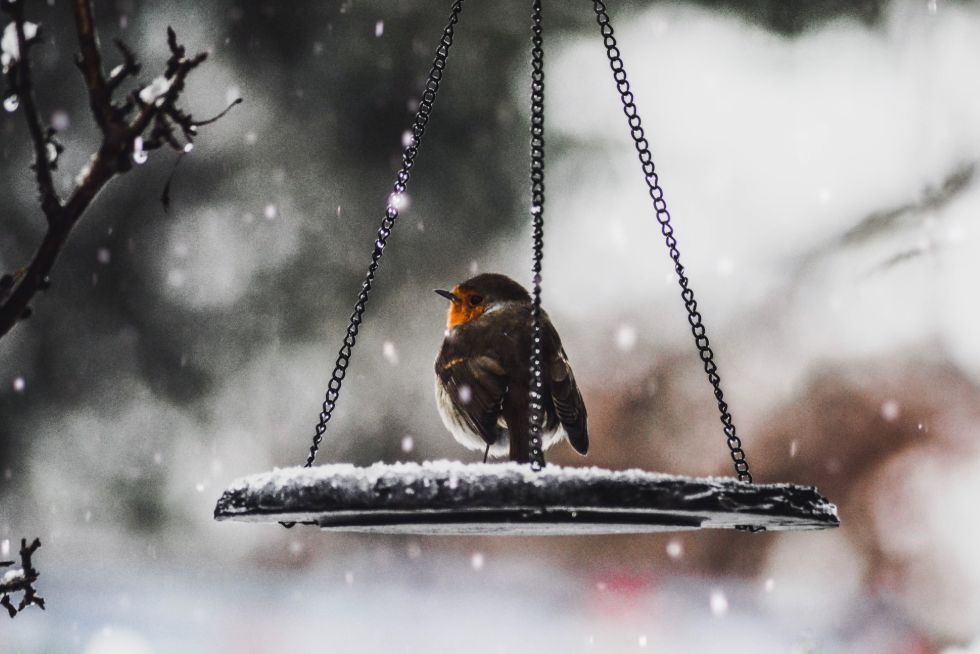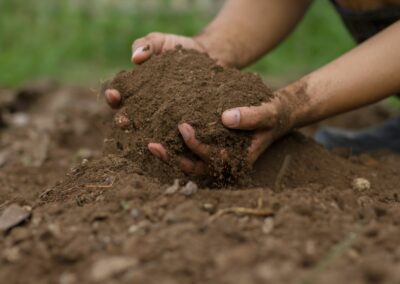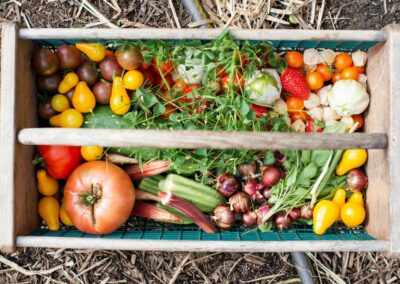February doesn’t seem like the most fun month to be spending in the garden, but there’s still plenty you can do without freezing your extremities off. Quick chores on the one end, prep you can do inside or in the shed on the other end: February is all about getting ready for spring. It will be there before you know it!
1. Prepare your Potatoes for Planting
For most gardeners, it’s exciting to see when potatoes sprout even before officially planting them and that’s one of the many reasons why some horticulturists “chit” their potatoes. But what is chitting and is it really that important?
Chitting is the process of preparing tubers (such as potatoes) for planting by encouraging them to begin sprouting. The advantage of this method is that it allows for an earlier harvest date (by 10-14 days) than normal.
Here’s how to do chit potatoes before you plant them:
- Look for seed potatoes (maybe they’re still in your garden) to chit or buy some — very important to note, it should be ‘seed’ potatoes and not just a regular potato from the supermarket. Most potatoes meant for cooking and eating get treated with a sprout inhibitor.
- Next, you need a container. Egg trays are perfect for this, but if you don’t have any, you can use any tray.
- Then, once you have the two above items, it’s time to arrange the potatoes in the right position — ‘potato eyes’ should face upwards. Shoots will sprout from these eyes.
- Finally, place the potato trays somewhere cool and dry, ideally the temperature should be between 45°F /7°C and 60°F / 16°C.
That’s it. Wait for 2-3 weeks and once the shoots are at least 1-2 inches long, you can begin to bury the potatoes in the soil.
2. Get Rid of Winter Weeds
By February, you might notice that winter weeds cover parts of your garden — not really a great sight if you’ve been diligently keeping weeds out the rest of the year.If the temperature outside is bearable and if your schedule allows, go ahead and do some tidying up in your tiny paradise.
You can make your own organic herbicide with a vinegar-and-water mixture — just to make sure you don’t accidentally spray it on your other plants.
Or you can cover weeds with a thick layer of mulch; depriving weeds of light and oxygen often does the trick way better than any pesticide could.
Whether you go for spraying weeds or covering weeds with mulch will depend on your current setup, the availability of mulch, and the location of the weeds you want to get rid of.
3. Refill the Bird Feeder
Around mid-winter, birds are still struggling to find food and water, so if you welcome birds in your garden, you might want to feed our cute feathered friends.
It’s worth noting that predators like cats and mice are also most likely half-starved, therefore, be sure to put the feeder in an area they can’t reach. Otherwise, you’ll do more harm than good to the birds.
4. Continue Increasing Your Compost Bin
If you started composting earlier this winter (or even before that!), keep adding vegetable and fruit peelings, leaves, tree prunings, and any compost material to your heap. If you started composting during the first frost of the winter, it will only be a matter of days before you can use the finished product on your garden bed.
But if you haven’t gotten to composting yet but you realize it’s a good idea to do so, go ahead and begin now. As the natural composting process takes time, spring might be over by the time that it’s ready to be used – depending on the composting method you use and how much work you put into it! However, your compost won’t go bad – many plants require fertilizing after spring, or you could keep the compost for next spring.
As an alternative, you can start “direct composting” as described in this article, so you can start planting in that garden bed as soon as you’d like.
5. Inspect Gardening Tools
Gardening tools serve as your magical weapon that makes tasks in your backyard so much easier and simpler, thus, it’s important that you take good care of these.
Considering that it’s just going to be a few weeks from now before spring starts, you need to prepare and make sure your tools are well-maintained.
Check all of your gardening equipment, particularly the made-of-metal ones, as they are prone to rust. Season them with oil, if need be.
6. What to Plant in February
Winter is not conducive to planting, but even so, there are a number of vegetables that thrive in such conditions. These are some of the cool-weather crops that you can plant:
- Peas
- Spinach
- Radish
- Kale
- Turnips
Of course, cool-weather planting crops are not only limited to the above list. As a matter of fact, there are some other vegetables that you can grow along with those mentioned above to achieve their optimal growth.
Try companion planting – it’s the method of planting two or more plants close to one another so each can benefit from the other’s nutrients — plus, you thereby save garden space.
7. What to Harvest in February
What’s growing in your garden? If you planted winter crops last year, some of them will now be ready for harvest. Listed below are some of the crops you can harvest during this month:
- Leeks
- Cabbages
- Parsnips
In case you are not sure whether they’re ready to pick, here’s a guide on how to tell if the vegetable is set to harvest.
8. What to Prune in February
Pruning is a good practice to encourage healthy growth and to get rid of the damaged and diseased parts of the tree or plant.
However, that doesn’t mean that you can do it whenever you please. Poor timing might cause your beloved tree or plant to die. There is both a right time and a right season to carry out this task successfully.
Below are some of the plants that are ideal for mid-to-late-winter pruning:
- Roses
- Evergreens
- Wisteria
- Winter-flowering Jasmine
- Many types of trees
Since these plants are dormant at this time, they’re unlikely to put out new stems that could be damaged in the cold weather. It’s also easier to prune this time of the year: dead parts and branches are more visible without the flowers and leaves blocking the view.
Note: If this is your first time pruning, this article teaches you all about it!
What are the tasks you’re doing in February around the garden? Let us know in the comment box below.










0 Comments